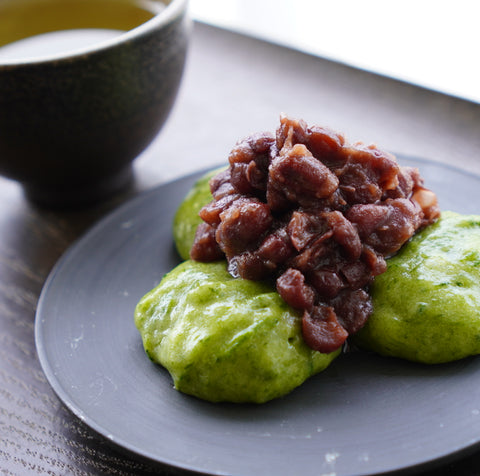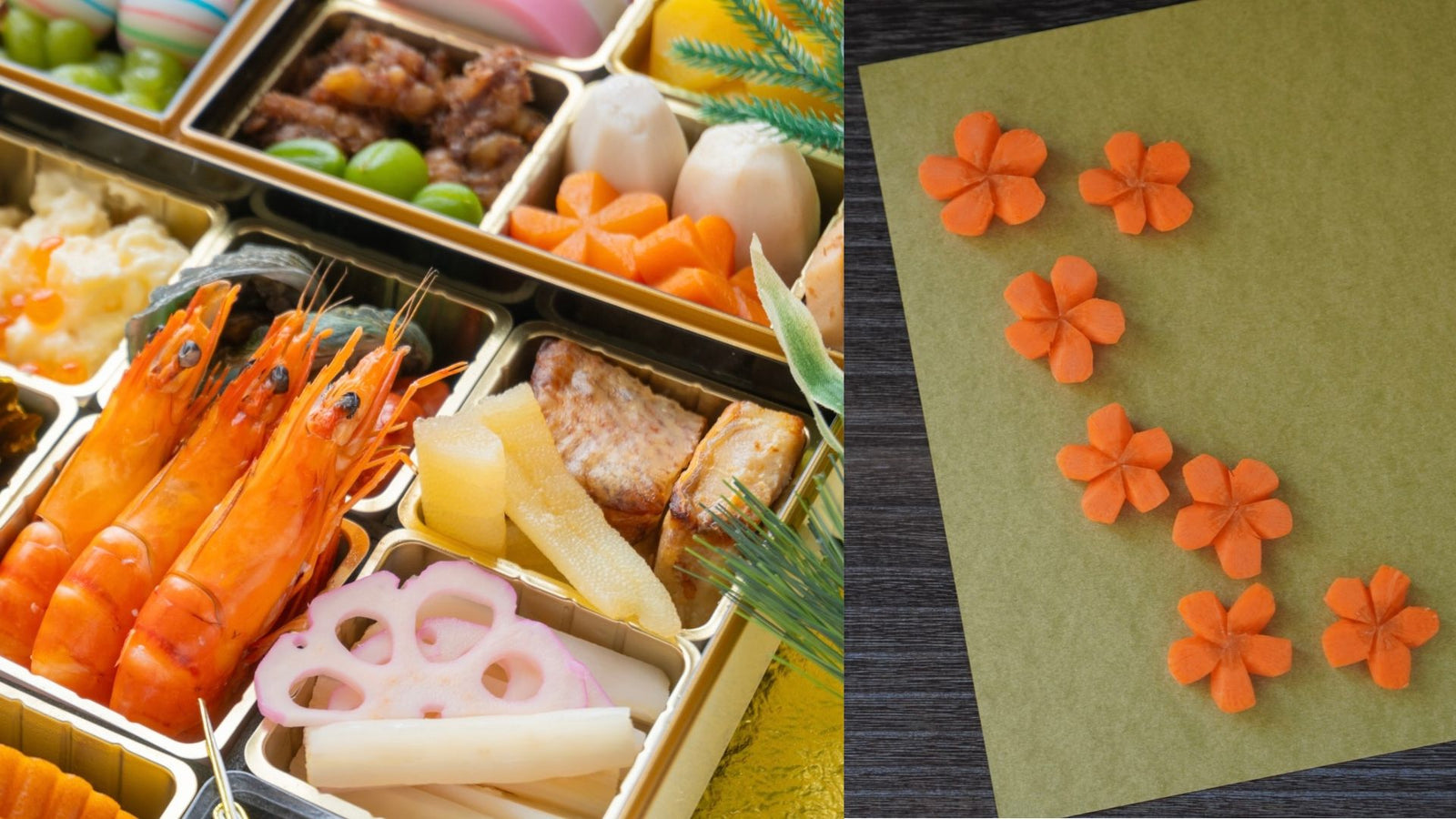日本料理には、料理を飾り、季節感を添えるために作られる「飾り切り」と呼ばれる野菜の彫刻がいくつかあります。
お正月には、おせち料理など、さまざまな料理に美しい形のニンジンがよく使われます。(上の写真)これも野菜彫刻の一種です。
正月料理には、お餅と野菜や魚が入った汁物である雑煮もあります。

雑煮
この形が何を表わし、何を意味するか知っていますか?
ねじり梅
この特別な野菜彫刻は「ねじり梅」と呼ばれ、文字通りねじった梅を意味し、梅(日本のスモモまたはアプリコットとも呼ばれる)の花の形を示しています。

梅の花
梅は春の花よりも早く春の始まりに咲くことから、昔の人々は梅を縁起物として愛し、春のお祝いには欠かせないものとなっています。
梅の形をした野菜を添えることで、料理に春らしさが加わります。大根を梅の形にアレンジすることもあります。
にんじんや大根は、塩だけで茹でて料理の付け合わせとして使われることが多いです。おせち料理以外にも、鍋料理やシチュー、弁当、串焼きの付け合わせなどにも使われます。
和食のシェフは包丁を使って完璧に仕上げます。家庭では、最初の工程で梅の型を使うことが多いです。梅の型をお持ちでない方もいらっしゃると思いますので、今回は型なしで作る簡単な方法をご紹介します。一度手に入れれば、あっという間に作れますよ。シェフのように完璧な形にはならないかもしれませんが、きっとご友人やご家族への素敵なサプライズになること間違いなしです!
ねじり梅の作り方
材料
ニンジン
装置
小さなナイフ
説明書
- にんじんを5~7mmの厚さに切ります。
- 星型に切ります。切る前にナイフで星型に印を付けておくと切りやすくなります。

- スライスの1/3の深さに5本の切り込みを入れます。切り込みは下の写真のようになります。

- それぞれの線に向かってV字型に斜めに切ります。


- 端を切り落として丸い形にします。

残ったにんじんを使ってスープやシチュー、ミートソースを作ってみましょう。
料理に新しいテクニックを学んで楽しんでください。
日本料理の記事


本日のおすすめ
善香園茶園 SZ006:自然栽培玄米茶 緑茶パウダー入り 無肥料自然栽培粉末茶入り玄米茶
静岡では緑茶だけでなく、お米も自生しています。静岡産の緑茶と炒り米を使った玄米茶は、まろやかな味わいで、冬のお祝い事で重たい食事をした後のリラックスタイムにぴったりです。




